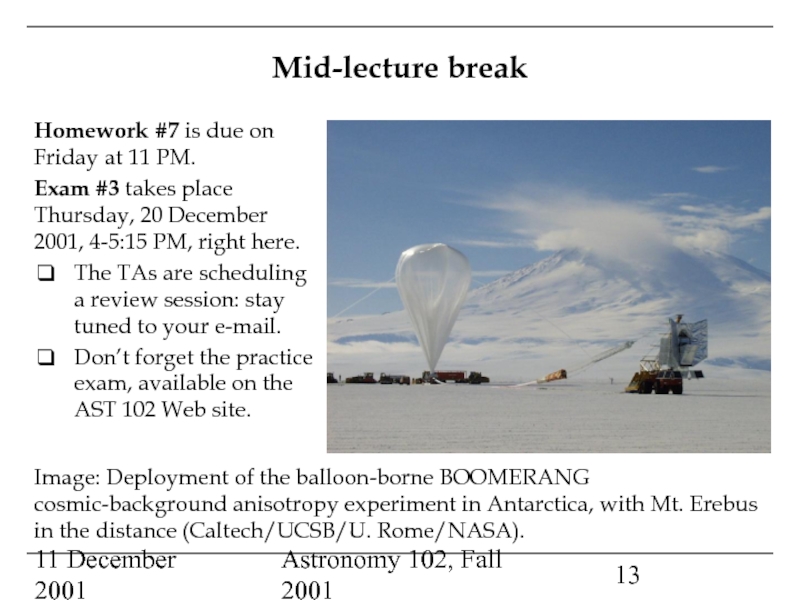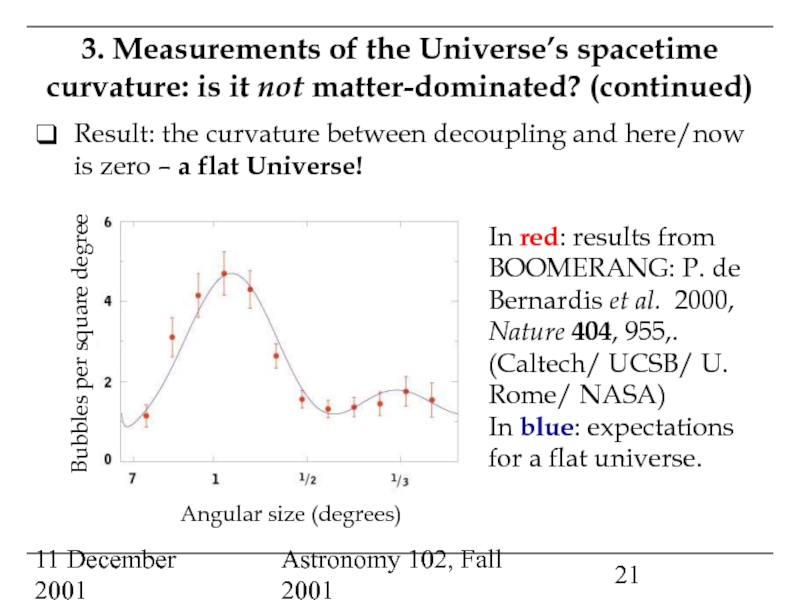Matter-dominated universes, and measurements of the mass density of the Universe: an open Universe?
Direct measurements of the Universe’s curvature: a flat Universe?
Time without end: the Universe does not appear to be a black hole, is probably open, and will probably expand forever.
The NASA Microwave Anisotropy Probe (MAP), launched this year, which may obtain the definitive images of cosmic background fluctuations .































